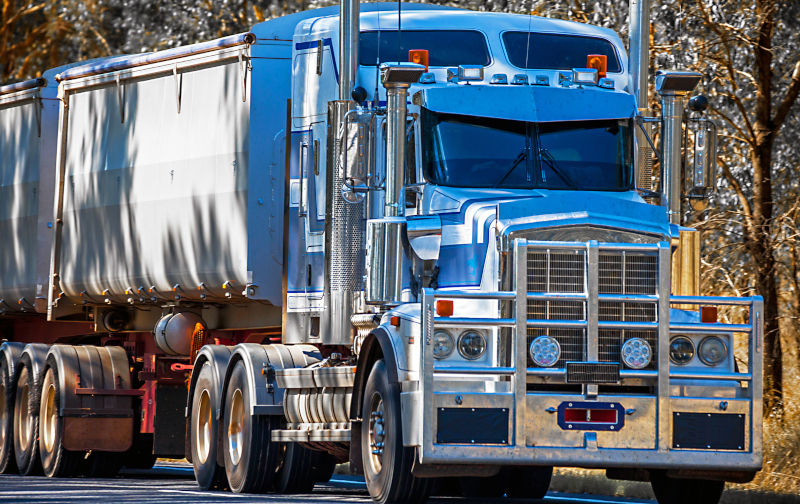Pointless, petty regulations are a handbrake on Australias truck fleet
November 10, 2022
We all rely on trucks: they carry our fuel, tools, construction materials and of course, food and parcels. While trains specialise in carrying bulk goods such as coal and grain, trucks carry nearly 80 per cent of the non-bulk items we use at work and home. But unfortunately, trucks also create carbon emissions, and pollution that damages peoples health.
Everyone benefits when unnecessary barriers to cleaner and safer trucks are eliminated. And everyone benefits when unnecessary costs are eliminated. But Australias truck operators are burdened by pointless and out-of-date federal and state regulations.
The federal government should get rid of laws that require Australian trucks to be 2-to-4 per cent narrower than trucks sold in Europe and North America. And it should work with the states and territories to update weight regulations for trucks.
Federal laws limit Australian truck width to 2.5 metres. By contrast, trucks in the UK, Europe, and New Zealand are allowed to measure 2.55 metres, and 2.6 metres for refrigerated vehicles. In the US, all trucks can be up to 2.6 metres wide.
This small difference in width has a big effect on Australias truck industry. Because Australia is only about 1 per cent of the global market for trucks, we are a technology taker. While some Australian firms build trucks to meet local width requirements, modern safety and fuel-saving technologies are developed for wider trucks. So are zero-emissions technologies which means Australias width constraint will get more costly as the world moves to net zero.
Theres no good reason for Australia to require narrow trucks. Australian traffic lanes are comparable to, or even wider, than lanes in the US, the UK, and Europe.
With trucks responsible for 4 per cent of Australias carbon emissions, the federal government should get rid of regulations that make it harder to meet our international commitment to net zero by 2050. Thats why Grattan Institute recommends that Australian trucks should be allowed to be 2.6 metres wide.
State and territory laws place weight limits on trucks. But the limits are out-of-date they do not reflect modern tyre technology.
Weight limits are imposed to reduce road damage heavier trucks do more damage, and this damage is expensive to repair. But weight limits sometimes mean that trucks cant carry better-but-heavier technologies, or more profitable payloads.
The first problem with current regulations is the weight limit on trucks steer axle the axle that changes the direction of a truck. Research shows that if trucks use modern tyres that are 375mm wide, trucks can carry an extra 500kg on their steer axle without doing more damage to roads.
Wider tyres and heavier limits on steer axles are a win-win opportunity for taxpayers and operators. This regulatory update would also smooth the path to better health for Australians.
To reduce harmful air pollution from trucks, the federal government should mandate Euro VI pollution-reducing standards from 2024. Although trucks are only 3 per cent of Australias vehicles, they create about 25 per cent of noxious transport-related air pollution. This pollution causes asthma, heart disease, and cancers.
But the best pollution-reducing technologies add hundreds of kilograms to trucks. To meet current weight limits, operators will need to accommodate this extra weight by reducing trucks payloads. If state and territory governments increased weight limits on steer axles, operators could use the best pollution-reducing technology without increasing the burden on taxpayers, and without sacrificing truck payloads and productivity.
The second problem with current regulations is that weight limits depend on the number of tyres on a trucks axles.
Trucks with dual tyre configurations two tyres at the end of each axle are allowed to carry between 20 per cent and 50 per cent more weight on each axle compared to a truck with one tyre at the end of each axle.
Modern ultra-wide tyres, sometimes called super-singles, are designed to replace dual tyres and to improve fuel efficiency. And better fuel efficiency means fewer carbon emissions. But under current regulations, an operator who replaces two tyres with a wide single tyre cops a huge payload penalty.
Thats why our report calls on the federal government to work with state and territory governments to ensure that truck weight limits do not unnecessarily penalise operators who replace dual-tyre configurations with emission-reducing super-single tyres.
Australians want the fuel, food, and tools that trucks deliver not unnecessary regulations that increase costs. The federal and state governments should update width and weight regulations to make it cheaper and easier for operators to drive cleaner and safer trucks.
